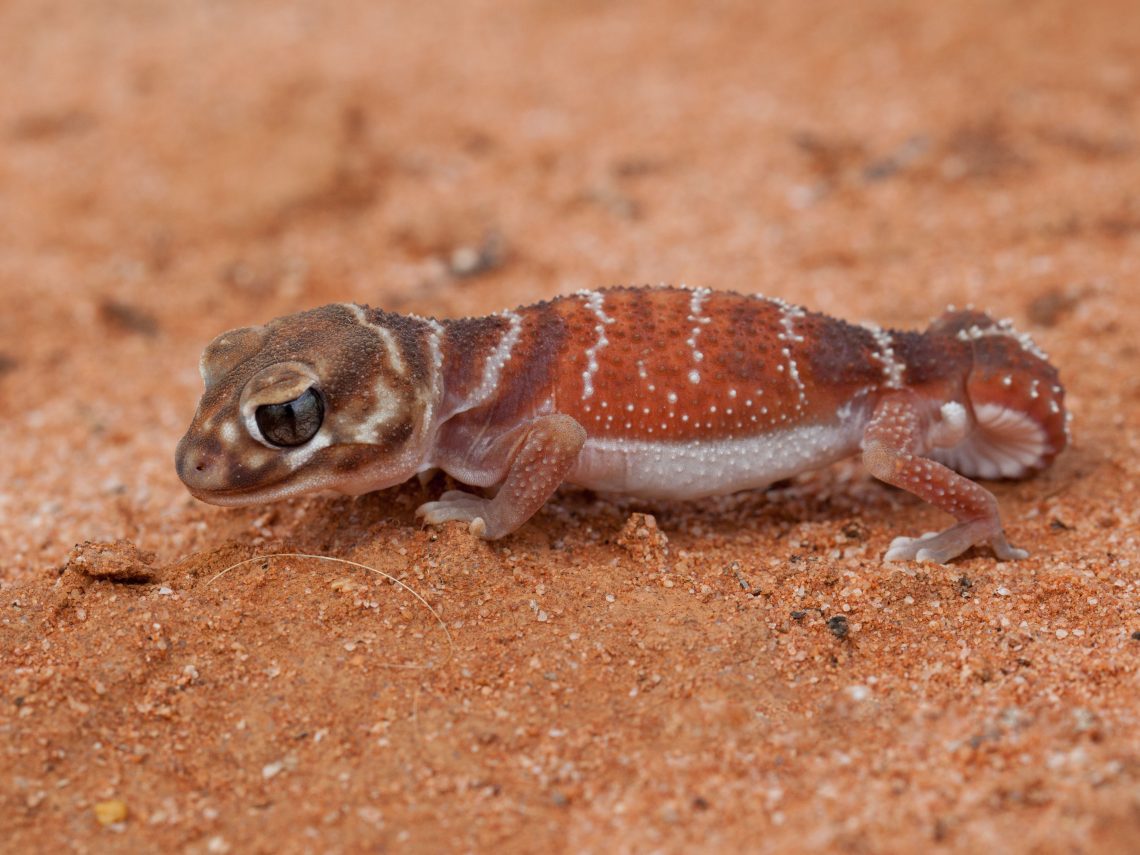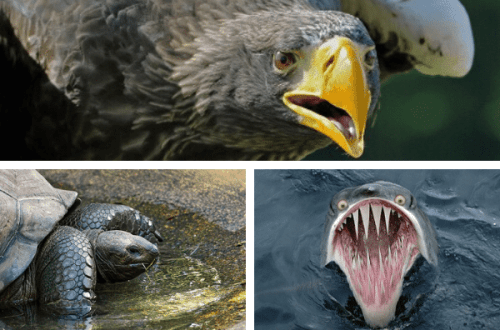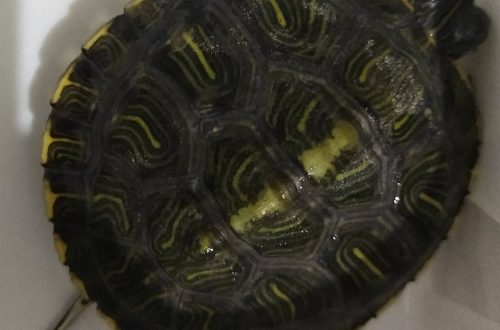
Nefrurs (Nephrurus) or Cone-tailed geckos
Bump-tailed geckos are one of the most memorable and recognizable lizards. All 9 species of this genus live exclusively in Australia. In nature, cone-tailed geckos are nocturnal, and during the day they live in various shelters. They feed on a variety of invertebrates and small lizards. You may notice that females eat more and digest faster than males, so it is worth keeping an eye on food objects. One corner of the terrarium should be kept moist, the other dry. It is also worth spraying these geckos 1-2 times a week, depending on the species. The optimum temperature of the content is 32 degrees. Among domestic terrariumists, representatives of this genus are extremely rare.
The cone-tailed geckos have an incredible voice. It can be seen that the “rough” species, as a rule, make more sounds than the “smooth” ones. The limit of their vocal abilities is the sound “merrr merr”.
These geckos can wag their tails! Believe it or not, they wag their tails when they are hunting for prey. The eyes are closely watching the prey, the body is tense, the movements are very thorough, reminiscent of a cat; at the same time, the tail reflects all the excitement and experience from the process. The tail pulses as fast as a small gecko can!
Between 2007 and 2011, the genus Nephrurus also included the species Underwoodisaurus milii.
Contents
- Smooth cone-tailed gecko (Nephrurus levis)
- Nephrurus deleani (Pernatti cone-tailed gecko)
- Nephrurus stellatus (Star cone-tailed gecko)
- Nephrurus vertebralis (Cone-tailed gecko with a line in the middle of the body)
- Nephrurus laevissimus (Pale cone-tailed gecko)
- Nephrurus wheeleri (Cone-tailed wheeler gecko)
- Nephrurus amyae (Central cone-tailed gecko)
- Nephrurus sheai (Northern cone-tailed gecko)
- Nephrurus asper
Smooth cone-tailed gecko (Nephrurus levis)
Nephrurus is light and light
Females are larger than males, reach a length of 10 cm. They live in arid, sandy areas of Central and Western Australia. In nature, cone-tailed geckos, like many desert dwellers, spend most of their time in burrows they dig in the sand. They lead a predominantly nocturnal lifestyle. Adult geckos feed on various insects – crickets, cockroaches, mealybugs, etc. Young ones should be fed with suitable-sized objects, but you should be aware that they do not eat for the first 7-10 days. This is fine! Forage insects are pre-fed with greens or vegetables and rolled in a calcium-containing preparation. The number of natural populations is declining in places due to the destruction of habitats. Morphs can be viewed here
Nephrurus levis pilbarensis
It differs from the nominative subspecies (Nephrurus levis levis) by the presence of granular (pimple-shaped) scales of various sizes on the neck. In subspecies, 2 recessive mutations occur – albino and patternless (no pattern). In the United States, the panernless morph is more common than albino or normal. Morphs can be viewed here
Western light blue
Sometimes it stands out as an independent taxon. It differs by a slightly larger size of the scales at the end of the muzzle, smaller than the scales located on the chin. The tail is broader and usually paler colored.
Nephrurus deleani (Pernatti cone-tailed gecko)
Reaches a length of 10 cm, found in the Pernatty Lagoon north of Port Augusta. Lives in arid sandy ridges in southern Australia. The tail is very slender, with large white tubercles. Juvenile (young) individuals have a former line along the spine. Listed by IUCN as “rare”.
Nephrurus stellatus (Star cone-tailed gecko)
Gecko 9 cm long, found in two isolated sandy areas with islands of vegetation. They are found northwest of Adelaide in South Australia and have also been seen between Kalgouri and Perth in Western Australia. This is one of the most beautiful representatives of the Nephrurus genus. The body is pale, yellow-brown, shading to dark red in places. At the intersection between the head and the front legs there are 3 contrasting lines. There are various tubercles and rosettes on the trunk and tail. Above the eyes there are scales painted in blue.
Nephrurus vertebralis (Cone-tailed gecko with a line in the middle of the body)
Length 9.3 cm. This species has a relatively slender tail with enlarged white tubercles. The color of the body is red-brown, along the line of the spine there is a narrow white stripe from the base of the head to the tip of the tail. It lives in the rocky forests of acacia, in the arid part of Western Australia.
Nephrurus laevissimus (Pale cone-tailed gecko)
Length 9,2 cm. Almost identical to Nephrurus vertebralis. The body is practically devoid of tubercles and pattern, the tail is dotted with enlarged white tubercles. The base color is pink to rose-brown, sometimes dotted with white spots. Three dark brown lines are located on the head and front of the body, the same 3 lines are on the thighs. This species has a wide distribution throughout Northern, Western and Southern Australia in vegetated sandy ridges.
Nephrurus wheeleri (Cone-tailed wheeler gecko)
Nephrurus wheeleri wheeleri
Length 10 cm. The tail is wide, tapering sharply towards the end. The body is covered with rosettes that protrude from the body in the form of dense tubercles. The color of the body is very variable – cream, pink, light brown. 4 stripes run across the body and tail. Both subspecies live in the arid part of Western Australia, inhabiting the stony acacia forests. Not available for American herpetoculture.
Nephrurus surrounded by wheelers
We can most often find this subspecies on sale (in America). It differs from the previous, nominative, subspecies by the presence of not 4, but 5 stripes. Morphs can be found here
Nephrurus amyae (Central cone-tailed gecko)
Length 13,5 cm. This gecko has an extremely short tail. It was named after Amy Cooper. Body color varies from light cream to bright red. The largest and most prickly scales are located on the sacrum and hind legs. A large head along the edge is framed by a very beautiful pattern of scales. This mass species is common in Central Australia. Morphs can be found here
Nephrurus sheai (Northern cone-tailed gecko)
Length 12 cm. Very similar to H. amayae and H. asper. The body is brown with thin transverse lines and rows of pale spots. This species is common on the northern escarpments of the Kimberley Rocky Ranges, Western Australia. Not available for American herpetoculture.
Nephrurus asper
Length 11,5 cm. Previously merged with N. sheai and N. amyae. The species may be reddish-brown in color with transverse dark lines and alternating rows of light spots. The head is separated by the reticulum. Inhabits the rocky hills and dry tropics of Queensland. For terrariumists it has become available only recently.
Translated by Nikolai Chechulin
Source: http://www.californiabreedersunion.com/nephrurus





